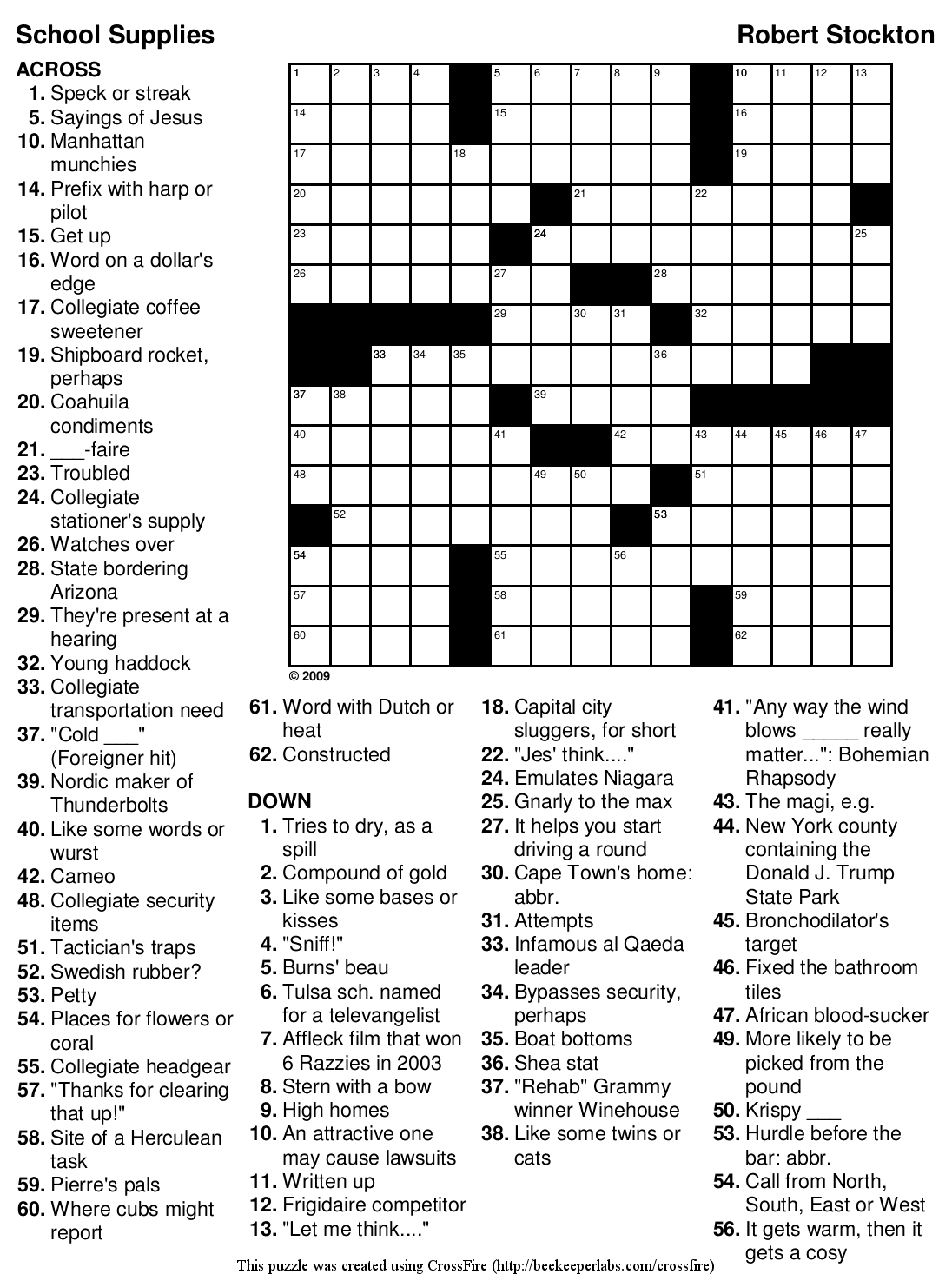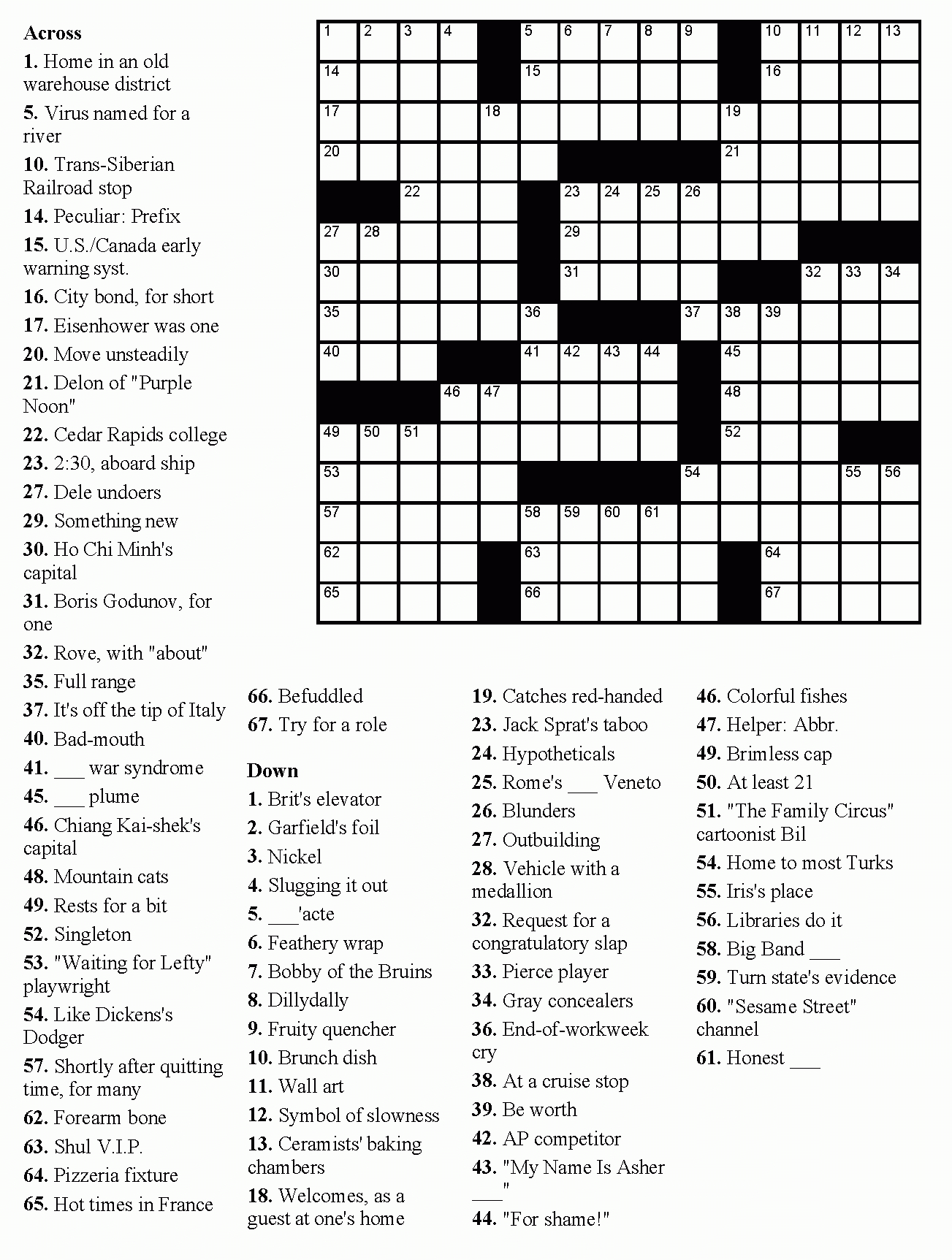


Yup, and yup! How do clue cross-references work? The autofiller supports filling around them, too 😉. Yup, both the constructor and the solver support entering rebuses - hit ‘Escape’ (or ‘Rebus’ on your mobile device keyboard) to enter a rebus. That’s all there is to it! If you’re looking for more info about constructing your first puzzle, this article has a lot of good information.įAQ What if I have an existing puzzle I’d like to upload?Ĭrosshare supports. When you’re ready, copy the link and share it with as many solvers as you can find! As the author, you’ll be able to view solve stats for your puzzle - click “More” and then “Stats” from the puzzle page. You might want to add a comment (solvers will see it they finish solving). After publishing, Crosshare will redirect you to your puzzle’s new home. Now click “Back to Grid”, give it one more look, and hit “Publish”. This gets entered at the top of the clue view. The only way to get better at cluing, though, is to force yourself to come up with some of your own! PublishingĪfter all of your clues are filled in, come up with a title for your puzzle. It can also help to look up words in a clue database like crosswordtracker to see how other constructors have clued them. This nytimes article talks about cluing and might be a good read for a beginner. It’s important to have some easier clues (especially on mini puzzles!) so that solvers have a place to start. Try to come up with your own interesting clue for each word. You’ll see every word in your grid with an input next to it for your clue. Once your grid is filled in click the “Clues” button in the top bar to go to the clue view. The Crosshare autofiller can help this along by showing you different candidate fills - every time you press the ‘Enter’ key (or click ‘Rerun Autofill’ in the top bar) you’ll get a slightly different fill. The best thing to do is to try to stay flexible and keep playing with different options until it all clicks.

Maybe you really want to work a specific word in but every time you try it makes for poor (or no!) choices elsewhere. It can take a lot of tweaking to get a grid that you’re happy with. This nytimes article does a pretty good job of introducing some of the ideas behind where they should go. Placing black squares is an art form for larger grids. Select the square and hit ‘.’ or type any letter to toggle it back. You can create a black square by typing the ‘.’ key on your keyboard or hitting the all black key on the keyboard if you’re on a mobile device. You can also use any other word you like even if it’s not in the list - it’s all COVFEFE. You shouldn’t rely exclusively on the autofiller - the wordlist(s) beside the grid give you other options for the currently selected entry. As you type you’ll notice the Crosshare autofiller magically fills in the rest of the grid. Filling the gridĪfter launching the constructor, click anywhere in the grid and start typing your first fill entry. Mini puzzles are a great way to get started because you don’t need to worry so much about the grid layout - you just need to focus on getting fill you like and coming up with fun clues. When you first launch the constructor, Crosshare defaults you to a 5x5 mini grid (to create a different sized puzzle click on “More” in the top bar and then click “New Puzzle”). Don’t be intimidated! Constructing great crosswords takes a lot of practice, but it’s easy to get started.


 0 kommentar(er)
0 kommentar(er)
